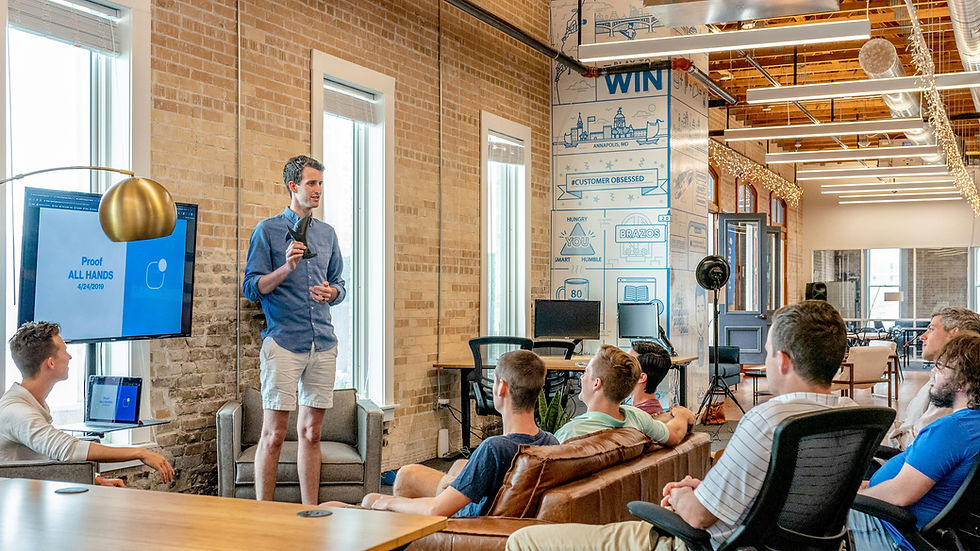The Growing Importance of Creative Thinking in the Modern Workplace
- Shahid KP

- Jul 3
- 3 min read

In today's rapidly changing job market, creative thinking stands out as a vital skill. A recent report indicates that 70% of employers will prioritize creative thinking in 2024, viewing it as key to driving innovation and problem-solving. As technology advances and the business landscape evolves, recognizing the significance of creativity is essential not just for individuals but for organizations too. This post explores why creative thinking is crucial and offers insights on nurturing it in the workplace.
Understanding Creative Thinking
Creative thinking is the ability to develop fresh ideas and solve problems in innovative ways. It isn't just for artists; it applies to various professional contexts, from marketing to engineering. For example, a team tackling product development can benefit from creativity by brainstorming features that customers have yet to consider, leading to breakthrough innovations.
Being a creative thinker means breaking away from standard ways of thinking. This flexibility is increasingly prized in fields ranging from tech startups to healthcare services. For instance, companies like Apple have thrived by encouraging employees to think differently and come up with original solutions.
The Rising Demand for Creative Thinking Skills
In a competitive job market, employers are finding that creative problem-solving is just as important as technical skills. The 2024 survey stressed that 83% of organizations are emphasizing creativity during the hiring process.
This change reflects a growing understanding that innovation drives growth. Creative thinkers are often able to pivot and adapt, finding solutions that may not be immediately obvious, thus positioning companies to succeed in challenging environments.

The Benefits of Creative Thinking in the Workplace
Fostering creativity in the workplace brings numerous advantages.
1. Enhanced Problem Solving
Teams that leverage creative thinking can approach challenges in unique ways, leading to more effective solutions. For instance, a marketing team may shift strategies to address customer feedback directly, resulting in 30% more effective campaigns.
This innovative approach not only boosts efficiency but can also improve overall outcomes for the organization.
2. Increased Collaboration
Creativity thrives in team settings. When diverse minds come together to share ideas, the result is a rich tapestry of solutions. Research shows that companies with robust teamwork report 25% higher productivity.
By fostering an environment that encourages collaboration, organizations enhance communication and expand their creative potential.
Strategies to Foster Creative Thinking
Given its vital role, how can organizations promote creative thinking among employees? Here are two effective strategies:
1. Encourage a Safe Space for Ideas
Creating an environment where employees feel safe sharing their ideas is essential. Regular brainstorming sessions and open forums allow teams to discuss concepts without fear of criticism.
This open dialogue enhances innovation and helps bring forward new ideas that might otherwise remain hidden.
2. Diversity of Thought
Workplaces that embrace diversity foster greater creativity. By hiring individuals from various backgrounds and experiences, companies can enhance their team's creative capacity. Companies with diverse teams see an up to 35% increased likelihood of outperforming their competitors.
Diversity not only enriches discussions but also leads to more comprehensive solutions, ultimately resulting in a robust creative process.

The Future of Work and Creative Thinking
As the future unfolds, the importance of creative thinking will continue to grow. Employers will increasingly search for individuals skilled at navigating complex environments through innovative approaches.
Organizations that emphasize creativity are more likely to gain a competitive edge, leading to sustained growth and success. For example, businesses that introduce creative training programs see a measurable increase in employee engagement and productivity.
The rise of automation and artificial intelligence highlights the unique human capacity for creativity. While machines excel at routine tasks, the ability to innovate and imagine solutions remains a distinctly human trait.
A Final Thought
Creative thinking is becoming an essential cornerstone of success in the modern workplace. With 70% of employers expressing a desire for this skill in 2024, it is crucial for both organizations and individuals to recognize its importance.
By cultivating creative environments, encouraging diverse perspectives, and recognizing innovative efforts, companies can lead the charge in transforming their industries.
The future belongs to those who dare to think creatively, paving the way for discoveries and successes that will shape our world.










Comments